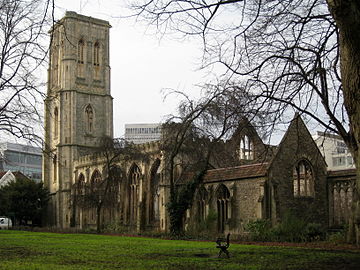Charles Hazell was born in Bristol, England and baptised at the Temple Church on the 18th February 1821.
Human settlement of Bristol dates back to at least 300,000 years ago, when there is evidence that Neanderthal people were living near the location of modern Bristol. It is located on the Avon River, quite close to its flow into the River Severn and onward into the Bristol Channel. It is one of the most western locations in south-west England, with the river Severn representing the border with Wales.
Bristol was the location of one of the “Burghs” built by King Alfred the Great (or possibly by one of his descendant kings) as a defence against the Viking invaders, particularly those who were settled in Ireland at that time.
In the medieval era, Bristol became the first official town (outside of London) to be incorporated in England (1155). From around this time, it became and has remained an important port for trade, especially after the discovery and expansion of the so-called “New World” as it was the first port of embarkation to the Atlantic Ocean.
In the Elizabethan time, Bristol became the first town (outside of London) in England to be incorporated as a city.
The Temple Church, where Charles was baptised, also has a long history. It was originally built by the Knights Templar (a Catholic military order founded in 1119 to protect travellers to the Holy Land, especially those on pilgrimage and later those going to the crusades). The unique feature of the building was a leaning tower.
The church was later taken over by the Knights Hospitaller (similar to the Templars) in the early 14th century, but in the mid-sixteenth century, the church became a parish church when it was caught up in the “dissolution of the monasteries” in the time of Henry VIII.
In the 2nd World War, Bristol was heavily bombed and the old Temple Church exists today as a ruin.
The coloured photo is the ruined church as seen today. The photo below is taken after the bombing in WWII and shows more clearly the extent of the lean of the tower.

